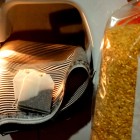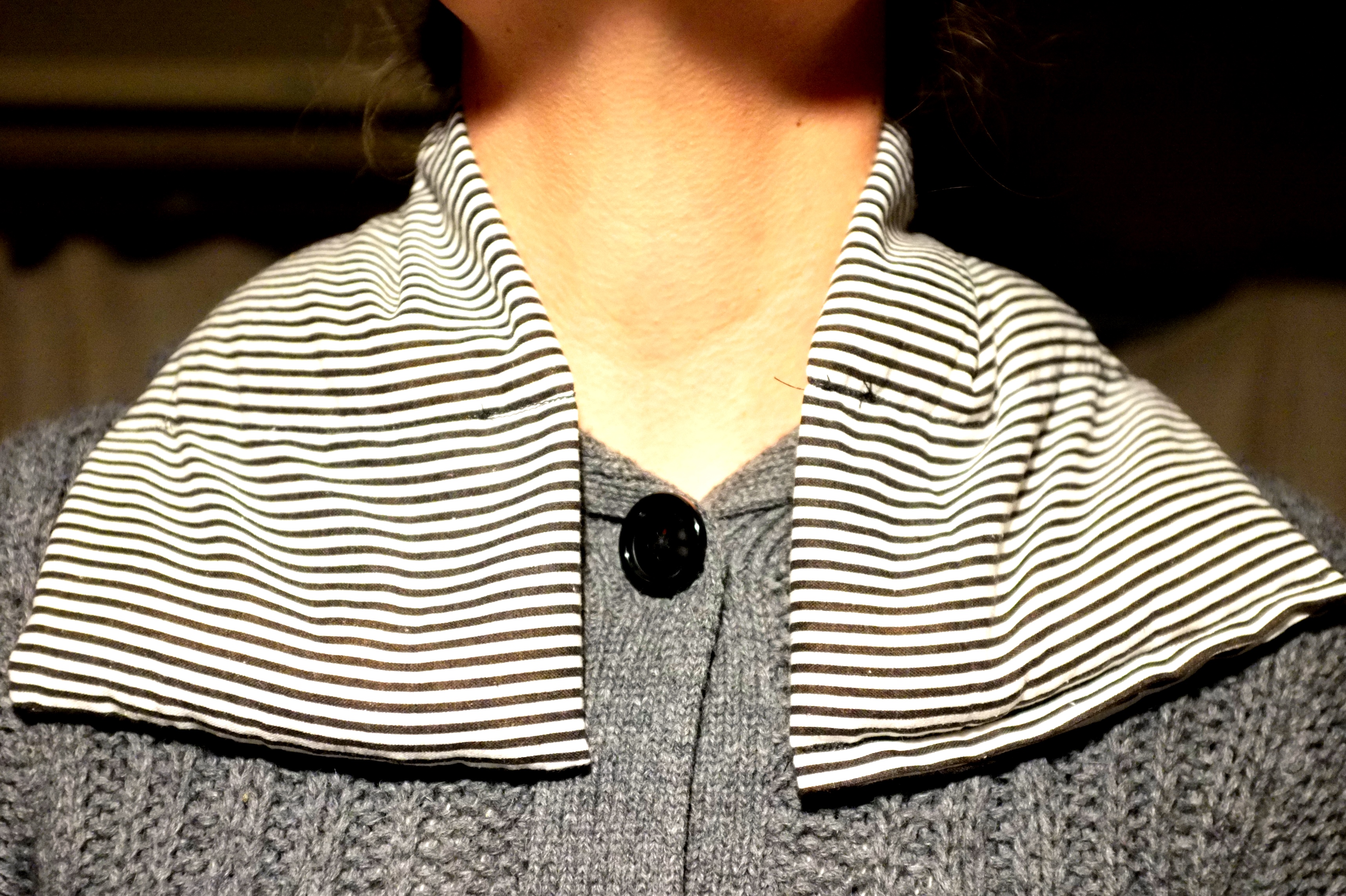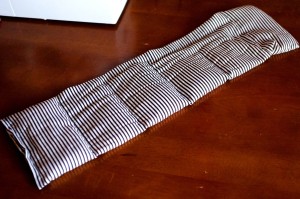Miso Green: Homemade Kairo (and other tips for winter)
There is a lot I could have written about in the last three months, but I’ve been sick and busy. Those are easy things to say to an editor who is, albeit very kindly, urging contributors to write so that she doesn’t have to put an entire magazine together on her own, but those aren’t the primary reasons I’ve held off on writing. Rather, due to the sickness and busyness, I’ve slacked off on the principles I preach in this feature. I’d come home from work and want to do nothing but lie in bed, thus forfeiting my time not just for writing, but for the chores necessary to avoid unnecessary waste. It’s embarrassing! But, oh well. January kicks off a new year, and while my resolutions will probably be the same as they were before, a year of missteps have led to discoveries I might not have otherwise made—or in this month’s case, remembered—that I can now pass on to you!
I almost never use disposable kairos (warming packs). I only use them on graduation day in February, when I am forced to sit in a freezing, unheated gym in a nice suit and somehow NOT look like I am shivering to death (new JETs, take note!), and the sticky-backed disposable ones are long-lasting and inconspicuous. The rest of the time, though, I reach for one of two things—the first is a hot beverage. My insulated mug makes for great drinking in the winter, but doesn’t warm my hands. On the other hand, the hot steel cans from a convenience store warm your body inside and out, and the containers are recyclable, so not a huge sin in the world of disposables.
The other thing is a reusable kairo. They litter Tokyu Hands and such—many are battery or solar powered, but are full of plastic parts that will surely fail after a year or two and end up in a landfill. Another type, which I recently won at an enkai, is filled with a grain and stays hot for an hour or so after being microwaved, which is just enough for my typical commute, but I can also re-nuke it in the office before heading off to a classroom with insufficient heating. While this type of store-bought kairo is certainly friendlier to the environment, the synthetic fabric used to encase them is still a deterrent.
Fortunately, my mother made neck warmers when I was younger, and I remember loving to use them. They aren’t terribly difficult to make, and can be sourced from things you probably already have in your apartment—no additional purchases necessary!
A bunch of grains Rice is the obvious choice, but if you like the particular smell of another grain, they’ll also work, but probably with varying heat-holding power.
A soft container If you want to make one for your hands or as a pillow, you can use cotton fabric (nothing synthetic!—it could melt in the microwave) to sew a great kairo—even better if it comes from old clothing! For the no-sew method, use a long cotton sock.
A way to close that container You’ll need the means to seal up your bag with either a needle and thread or sewing machine. Either way, it’s not terribly difficult! However, if you go for the tube sock method, you can just tie a knot at the end to finish it off.
 Optional—dried herbs I recommend tearing open a bag of your favorite soothing tea and throwing it in there so that it doesn’t just smell like grains. It’ll probably also give your kairo some aroma-therapeutic effects.
Optional—dried herbs I recommend tearing open a bag of your favorite soothing tea and throwing it in there so that it doesn’t just smell like grains. It’ll probably also give your kairo some aroma-therapeutic effects.
1. Sew a container (or grab a sock).
2. Mix the grains and herbs together.
3. Put them in the container
4. Sew or tie it shut. That’s it!
How to use:
Microwave it for 1 to 2 minutes, depending on its size, and use and reuse to your heart’s content; it should stay good for about 6 months, depending on how often you use it. You don’t want to get the grains wet for obvious reasons, but store-bought kairos recommend putting a cup with some water in the microwave with your kairo to prevent any problems that might occur with overheating.
While I’m already on the subject of keeping warm, let me share some other tips for keeping warm in eco-friendlier ways.
Hot water bottle
Using multiple blankets is the obvious way to stay warm when sleeping in the winter, but if you prefer to sleep with fewer layers, consider investing in a 2-liter yutanpo, or hot water bottle. You’ve surely seen these everywhere by now, and they’re wonderful! The larger sized ones stay warm through the night. You’ll typically see plastic ones, but if you happen upon a metal one, go for that! Not only is it made of a more eco-friendly material, but you can heat the bottle directly over your stovetop flame. You never even need to remove the water from the bottle!
Choose winter clothes wisely
When talking to my language tutor about my coat the other day, I told her that I try to go for wool as much as possible, and she responded by saying, “Wow, you really put thought into your clothes! I just try it on and buy it if it’s cute.†This is perhaps a common attitude, but clothing that does a poor job of insulating is what creates a need for things like kairo in the first place. There are plenty of technologically advanced synthetic fabrics out there which are engineered to be warm and breathable, but wool does as good a job, is natural, and is more likely to be found in fashionable forms. I’ve had a lot of luck at Muji, as well as at slightly more upscale international clothing stores, like Zara and the Gap.
Weather-seal your apartment
The best way to keep bugs out in the summer is also the best for keeping your heat inside in the winter. Weather stripping is available at 100 yen shops and does a lot for preventing drafts. You might also consider bubble wrapping your windows to simulate double-paned glass, but I’m not entirely sure how well it works…. I’ve tried it the last few years and I can’t tell the difference. We’ll see when the December electric bill comes in…
Alternate heater types
If you must use a heater (and you surely will—who can get anything done under a blanket all day?), make sure you use the most efficient kind for your goal. If you just want to temporarily heat a freezing room up to a livable temperature, it’s fine to use a forced-air heater, like your A/C or a ceramic fan heater. But if you’ll be keeping the heat on for a while, go for a radiant heater, like oil-filled or infrared coil heaters. They take longer to heat a room, but the room stays warmer longer and over a larger area than with an air blower. Oil-filled heaters, like the one I have, are considered far safer than infrared heaters, but are more expensive. Trust me though, they are worth the investment.
And a few more tips for warding off winter viruses:
Neti pots
If you’ve never used one, they’re nasal irrigators which originated in Ayurvedic medicine. Sterile, warm salt water poured into my sinuses gave me incredible relief during allergy attacks and colds, and allowed me to cut back on medications. It feels a little like drowning, but you get used to it quick. I got mine through iherb.com, an international company with very cheap shipping to Japan. If you decide to order through them, typing “BGL550†will get you some money off of your first purchase, but be careful— it is a horribly addictive site for hippie-types.
Macrobiotics
In later Miso Greens, I may get into this topic more, but one of the cornerstones of the macrobiotic diet, which originated in Japan, is eating fermented food, like miso and tsukemono. Eating foods like these that are full of probiotics will likely boost your immune system, but make sure never to microwave or overheat them! Add your miso paste a minute or two after the water has finished boiling to get the full benefit of the live microorganisms, and always go for fresh miso paste, not powdered.
Make or buy reusable masks
I don’t really buy into the surgical mask craze for preventing the spread of viruses, but if you do, consider reusable ones! Some appeal is lost for having to carry them home after being used, much like with cloth diapers or handkerchiefs, but when the alternative is throwing out tons of unnecessary waste, it’s worth the slight added grossness. Plus, disposable masks don’t have nearly as much character.
Stay warm and healthy this winter!
Ulu
miso.green.ht@gmail.com







